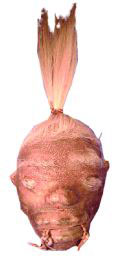Bing Crosby didn’t become one of the best-selling recording artists of all time through his hearth-warming baritone alone. The Pacific Northwest’s first globally renowned musician won his fame in good measure through corporate sponsorships and associations with a web of major labels and big-time media outlets, which, together, synergistically promoted him into then-unequaled stardom.
Born in Tacoma and raised in Spokane, Crosby headed to Hollywood in late 1925, and rose quickly as an unprecedentedly popular pop singer. Within a year, he’d recorded his debut single, “I’ve Got the Girl,” for Columbia Records, and had signed to tour with Paul “King of Jazz” Whiteman’s orchestra. In time he’d switch to Decca Records and enjoy a long string of hits that would eventually lead to him being deemed the “world’s most recognized voice.”
A major factor in all that was the exposure Crosby and his rumbling voice received through the emerging media of radio and television. In radio’s early days, every 15- or 30-minute block of broadcasting time often had its own designated sponsor: a flour mill, a food producer, a tobacco company. One of the most famous shows was Kraft Foods’ weekly Kraft Music Hall, on which Crosby debuted as a guest host in 1935 before becoming its regular host in 1946. That year he began hosting Philco Radio Time—sponsored by the nation’s leading brand of radios—and then, in 1949, took over hosting a show that had begun airing in 1939, The Chesterfield Hour, largely concerned with pushing what was then one of the Liggett & Myers Tobacco Company’s major brands, “The Cigarette That Satisfies.” Crosby—often pictured with pipe stem in mouth—hosted The Bing Crosby Chesterfield Show
Also born in Tacoma
(in 1924), Gene Patrick “Corky” Corcoran was a natural sax soloist whom locals were admiring even as a kid. At age 15 he was “discovered” by a major touring bandleader, Jimmie Lunceford, and lured into a life on the road. By 17, Corcoran stepped up and joined the Harry James Orchestra—just in time to appear in various films and on The Chesterfield Hour. Corcoran was among the star players promoted on Chesterfield tobacco cards. During WWII—when manly-man G.I.s smoked butts like they were the equivalent of Popeye’s muscle-enhancing spinach—the tobacco industry’s ad campaigns resembled battle plans drawn up by generals. And part of the technique for pacifying civilians was to seduce them into the addictive habit by associating smoking with glamorous movie stars, radio singers, and vibrant young jazz musicians—like Corcoran, who died of cancer in Tacoma in 1979. E
music@seattleweekly.com




